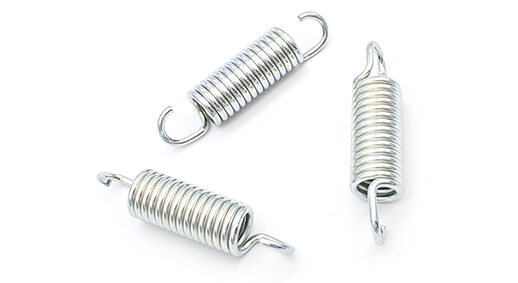Get unique, complex parts easily. No matter your requirements, Chaoyi Spring creates hard-to-produce coil springs and wire forms.
Let us help you create the custom wire form you need, from S-hooks and J-hooks to utility hooks and more.
We work closely with customers across a wide range of industries, helping them design and manufacture made-to-order parts.
Why choose Chaoyi Spring? We prioritize customer-focused collaboration, modern equipment and the latest technology to make your parts per print.
Find the information and guidance you need, from measuring a spring to learning about materials, placing an order and much more.
Coil springs are ubiquitous in mechanical systems, providing essential support and energy storage. One key aspect of their function is compression, where the spring is subjected to a force that


Coil springs are ubiquitous in mechanical systems, providing essential support and energy storage. One key aspect of their function is compression, where the spring is subjected to a force that reduces its length. This article delves into the fundamentals of coil spring compression, exploring the forces involved, the factors influencing compression, and the diverse applications of this principle in various industries.

Coil springs, as the name suggests, are helical structures made of spring steel or other resilient materials. Their inherent elasticity allows them to deform under load and return to their original shape once the load is removed. Compression is one such deformation, where the spring is subjected to an axial force that pushes its coils closer together, reducing its overall length. This compression results in the storage of potential energy within the spring, which is released when the force is removed, causing the spring to expand back to its original length.
The amount of force required to compress a coil spring depends on several factors, including:
The relationship between force (F), displacement (x), and spring constant (k) can be expressed by Hooke's Law, a fundamental principle in spring mechanics: F = kx
This equation highlights the linear relationship between force and displacement for an ideal spring within its elastic limit. Beyond this limit, the spring might deform permanently, losing its ability to fully recover its original shape.
The principle of coil spring compression is extensively employed in diverse applications across various industries, a few notable examples include:
Furthermore, coil spring compression plays a role in various specialized applications, such as:
When designing systems incorporating coil spring compression, several important considerations are paramount:
Understanding these considerations is crucial in ensuring the optimal design and performance of systems utilizing coil spring compression.
Coil spring compression is a fundamental principle in mechanical engineering, powering countless applications from everyday devices to complex machinery. By comprehending the forces involved, the factors influencing compression, and the various applications, engineers and designers can effectively leverage this principle to create robust and reliable systems. As technology advances, the applications of coil spring compression continue to expand, highlighting its enduring importance in the world of engineering and design.
In essence, coil spring compression is a powerful and versatile mechanism with far-reaching applications across numerous fields. The ability of these springs to store and release energy, combined with their reliable and predictable behavior, makes them indispensable components in various systems. From simple toys to sophisticated machinery, coil springs continue to play a critical role in shaping the world around us.
Browse some of the custom wire forms and springs that we manufacture. Don’t see what you need? We specialize in made-to-order products that meet your application requirements.
Visit Our GalleryNeed a custom wire form or coil spring? We make it work. Fill out the contact form and a representative will respond within 1 business day. If you have a PDF or CAD file, you can submit to request a quote.